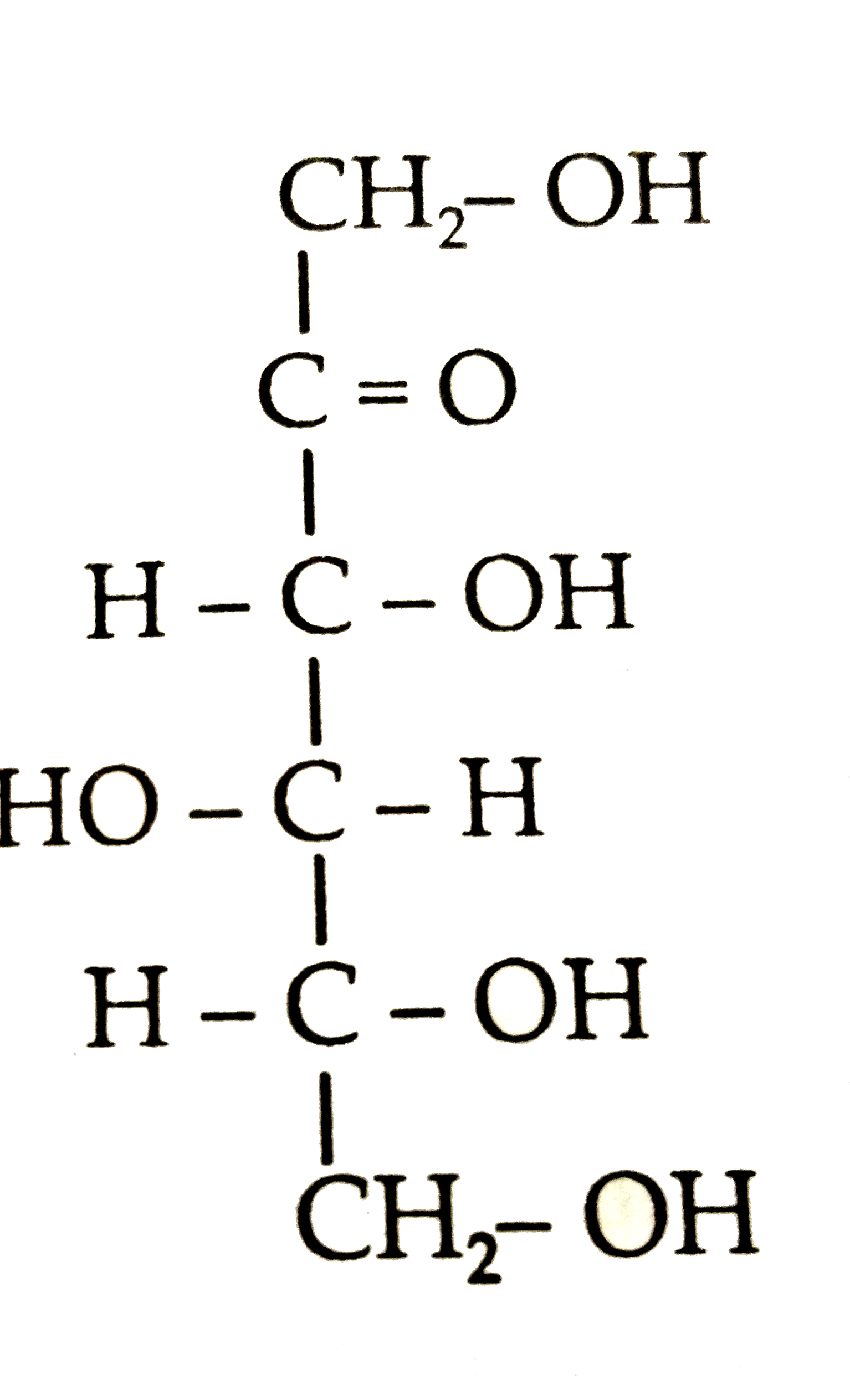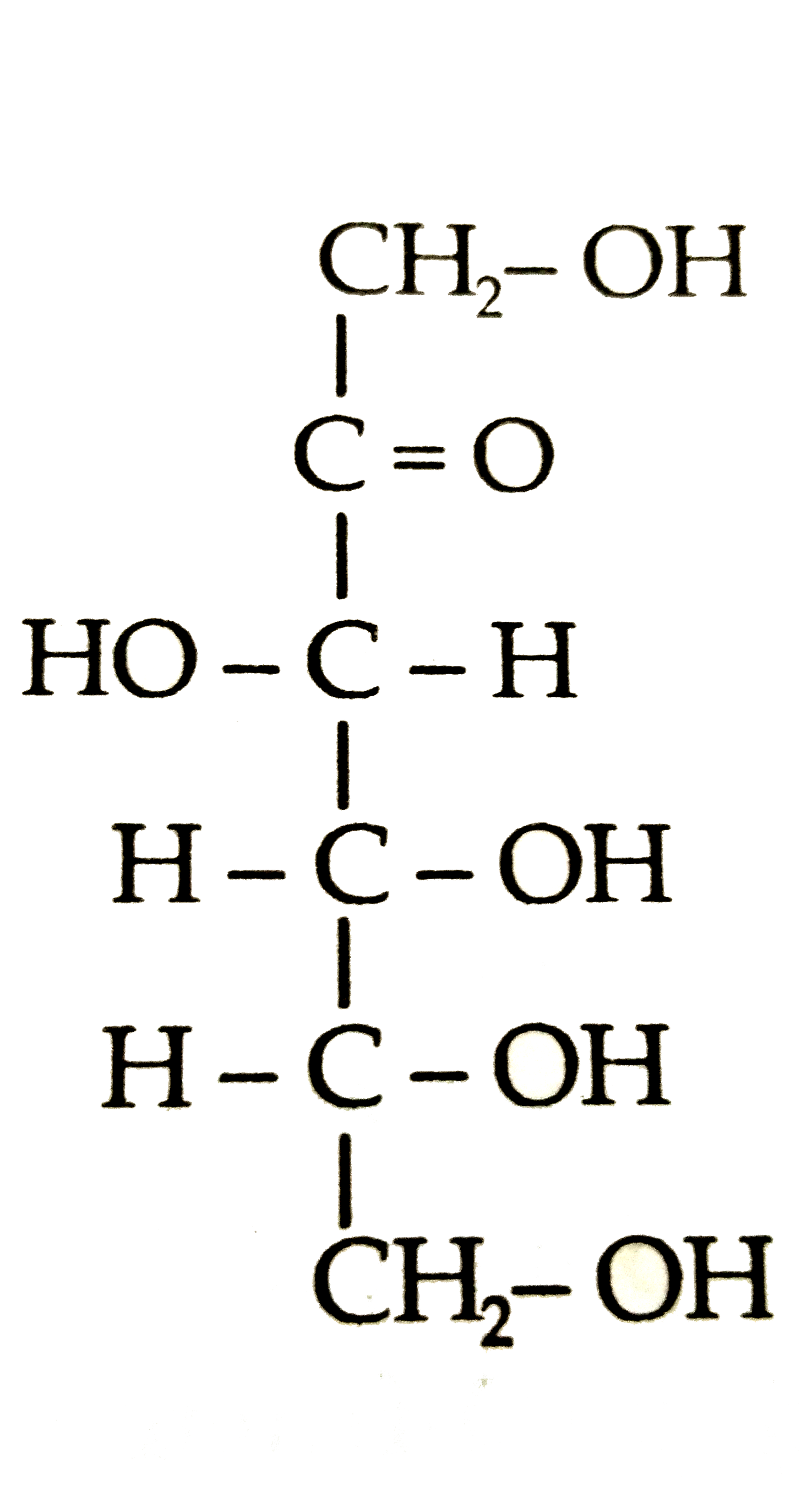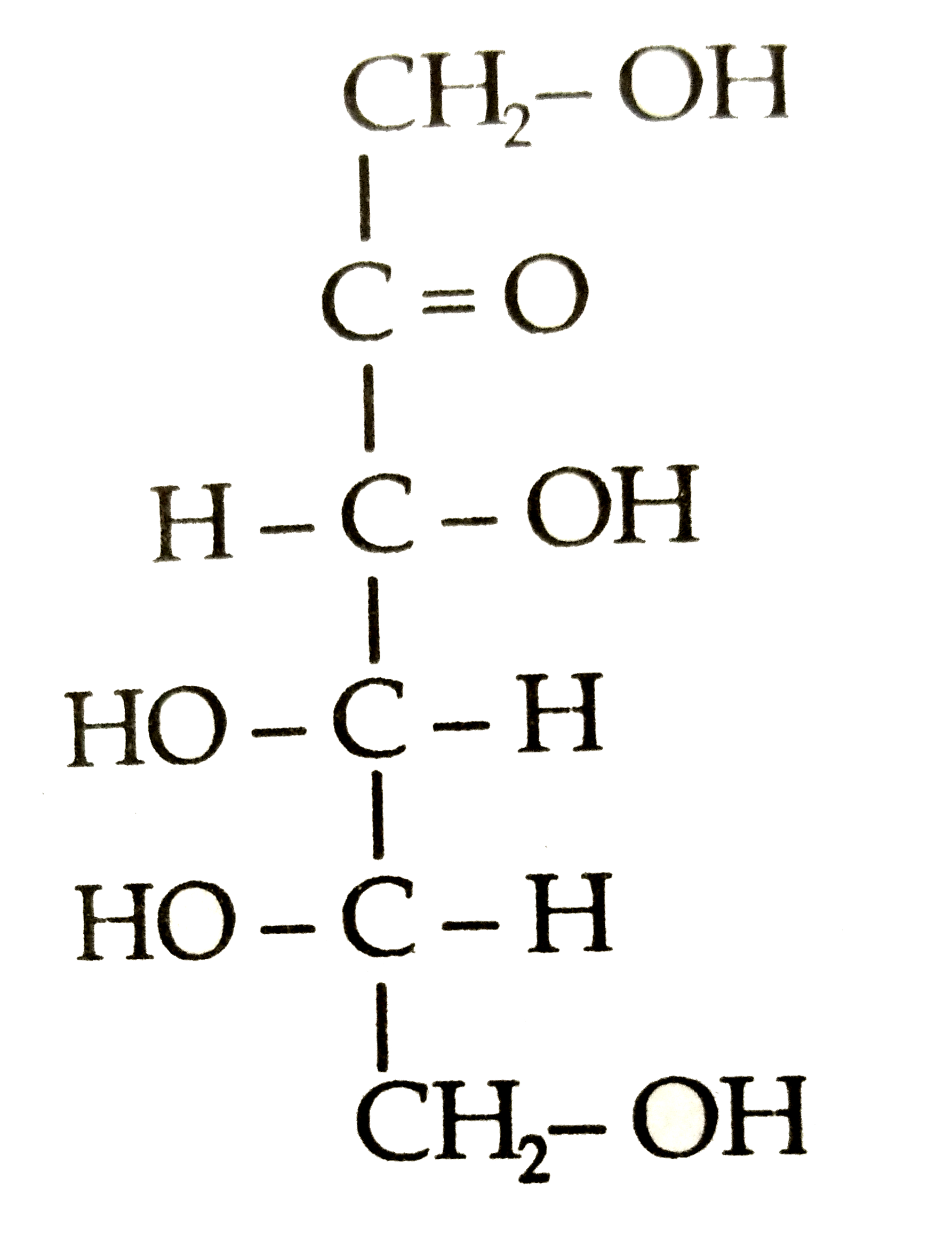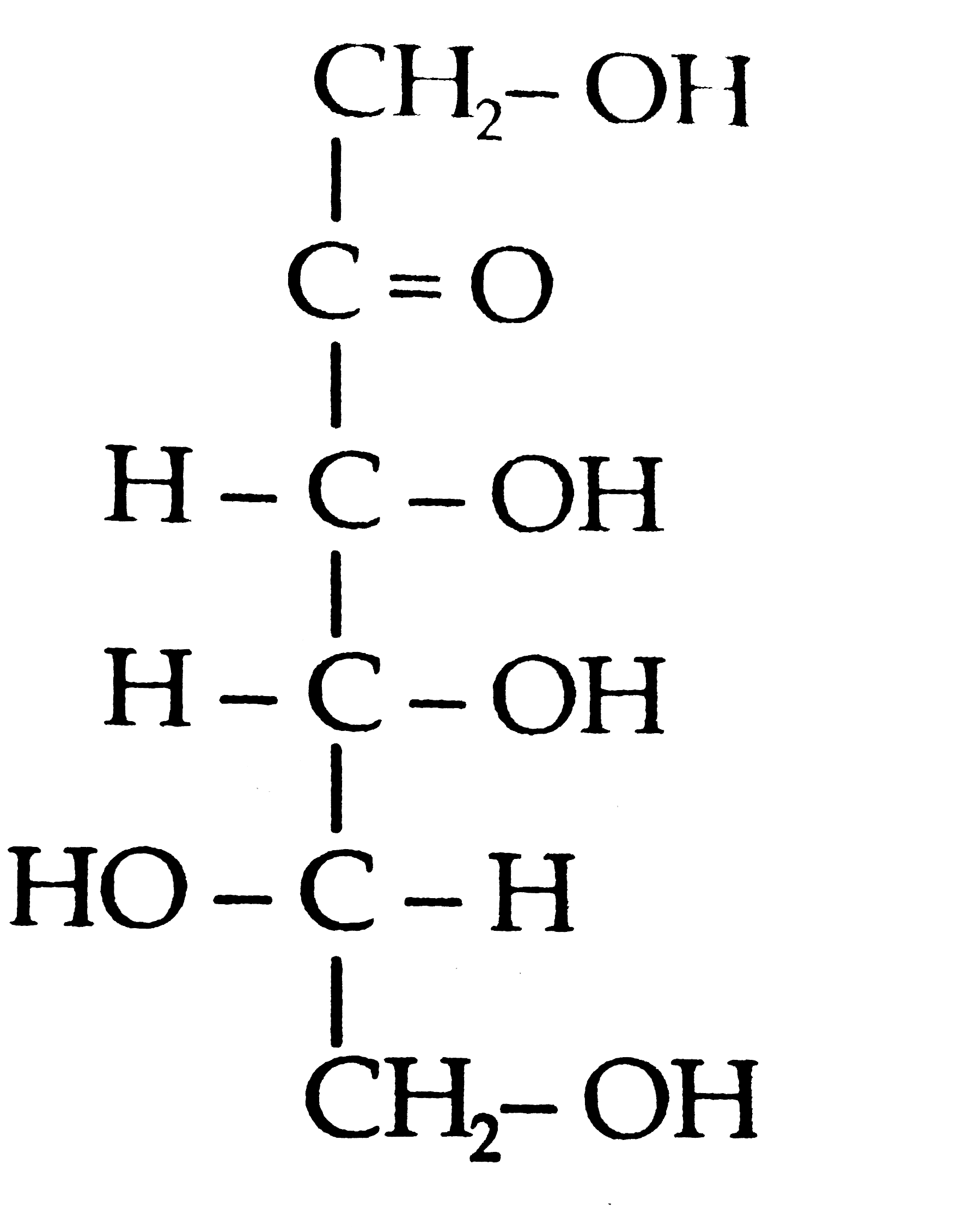Elucidate the structure of fructose.
Text Solution
Fructose is the sweetest of all known sugars. It is readily soluble in water. Fresh solution of fructose has a specific rotation -133∘ which changes to - 92∘ at equilibrium due to mutarotation. Similar to glucose, the structure of fructose is deduced from the following facts.
(i) Elemental analysis and molecular weight determination of fructose show that it has the molecular formula C6H12O6.
(ii) Fructose on reduction with HI and red phosphorus gives a mixture of n - hexane (major product) and 2 - iodohexane (minor product). This reaction indicates that the six carbon atoms in fructose are in a straight chain.
FructoseHI/P−−−−−→ReductionCH3(−−CH2−−)4CH3+CH3−CH∣I(−−CH2−−)3CH3
(iii) Fructose reacts with NH20H and HCN. It shows the presence of carbonyl groups in the molecule of fructose.
(iv) Fructose reacts with acetic anhydride in the presence of pyridine to form penta acetate. This reaction indicates the presence of five hydroxyl groups in a fructose molecule.
(v) Fructose is not oxidized by brom~ne water. This rules out the possibility of presence of an aldehyde (-CHO) group.
(vi) Partial reduction of fructose with sodium amalgam and water produces mixtures of sorbitol and mannitol which are epimers at second carbon. New asymmetric carbon is formed at C-2. This confirms the presence of keto group.

(vii) On oxidation with nitric acid, it gives glycolic acid and tartaric acids which contain smaller number of carbon atoms than in fructose.

This shows that a keto group is presence of 10 alcoholic groups at C-1 and C-6.

|
Topper's Solved these Questions
- BIOMOLECULESBOOK - SURA PUBLICATIONCHAPTER - BIOMOLECULESEXERCISE - UNIT TEST
9 Videos
- BIOMOLECULESBOOK - SURA PUBLICATIONCHAPTER - BIOMOLECULESEXERCISE - ADDITIONAL QUESTIONS AND ANSWERS (SHORT ANSWER)
24 Videos
- CARBONYL COMPOUNDBOOK - SURA PUBLICATIONCHAPTER - CARBONYL COMPOUNDEXERCISE - UNIT TEST (LONG ANSWER)
1 Videos
Similar Questions
Knowledge Check
Structure of D-fructose is
A B
B C
C D
D
In the ring structure of fructose, the anomeric carbon is
AC1BC2CC3DC4In the ring structure of fructose, the anomeric carbon is: -
AC-1BC-5CC-2DC-6
The number of atoms in the cyclic structure of D-fructose is ____________
View SolutionThe number of atoms in the cyclic structure of D-fructose is ____________
View SolutionThe number of chiral centres in the open chain structure of fructose is
View SolutionThe formation of furanose structure of fructose involves the interaction of functional groups present at :
View SolutionCyclic structure of fructose resembles with
View Solution

